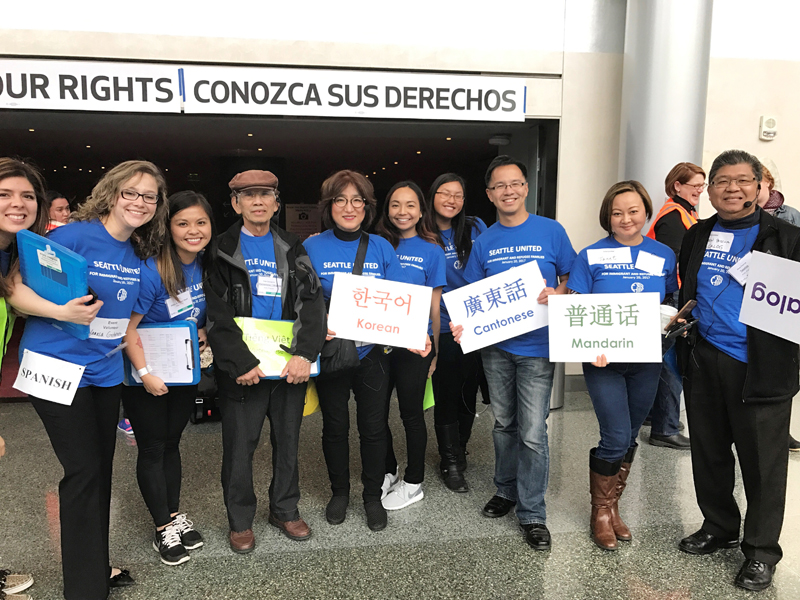
Seattle Neighborhoods
The Seattle Department of Neighborhoods uses Community Liaisons to open lines of communication with
historically underepresented and hard to reach groups.
Who are the people in your neighborhood? For starters, people who understand the issues, know the back streets, speak the language.
They connect with the people because they’re of the people.
The Seattle Department of Neighborhoods has put that dynamic to work, employing representatives in key neighborhoods to help spread the word about city initiatives. These advocates, who are employed as independent contractors through the Community Liaisons program, have helped open the lines of communication with historically underrepresented and hard to reach groups. Among them are residents with language barriers, African-Americans, Native Americans, the homeless, the LGBTQ community and people with disabilities.
“A lot of our liaisons are respected people in their communities and they are constantly on the ground, so there’s always a sense of familiarity when they go out,” said Amy Huang, a Community Liaisons program manager. “When you go out to a community engagement event and there are folks who are familiar with the liaison by face or name, it automatically creates a connection that maybe city staff or departments don’t have.”
The city launched the forerunner of what is now its Community Liaisons program in 2009 to assist with a limited group of planning discussions, according to Department of Neighborhoods Strategic Advisor for Communications Lois Maag. The city has since taken the approach to a new level and now recruits individuals to assist with several city departments based on their needs.
The job requirements are dependent on the specific projects they’ll be working on, said Virginia Weihs, also a Community Liaisons program manager. Generally, though, the city looks for people who show a commitment to their communities and hold experience in public speaking, leading meetings, and interpreting.
“Maybe a city department will be tabling at a community event and we aren’t able to reach people because we don’t have the language skill set or the familiarity that most of the community wants to build that connection,” Huang said. “Our liaisons are the bridge. They support the city to start to build that connection and begin to formalize those relationships, and hopefully to sustain and make long-lasting relationships.”
Weihs said the liaisons were particularly helpful speaking on behalf of the Seattle Department of Transportation as it sought to increase awareness of its Transportation Equity Program, which aims to promote affordable, safe and sustainable travel options for low-income households. They’ve also been used to build awareness of a new bikeshare program, affordable carsharing options and a new pass that can be used to ride several transit modes throughout Seattle.
“When you’re able to show these types of resources and services that communities have never heard of, and they have a liaison show how to use them or how to access them, it becomes so much easier for the Department of Transportation to increase their level of outreach and engagement,” Weihs said.
The city also runs a Community Liaisons Institute to train these advocates and improve their work. The Institute regularly brings in outside experts to lead workshops on improving their leadership and communication skills as well as other relevant topics.
No matter how good liaisons are at their jobs, Weihs said in order for the program to succeed cities must be responsive to the input they receive and sometimes willing to change how they do business. “It’s definitely a give and take process for their governments,” she said.
Karl Vilacoba is a freelance writer based in New Jersey.